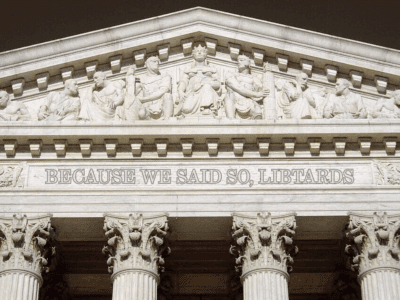NEPA in the Supreme Court (Part I)
A pending case could mean radical retrenchment of a foundational environmental law.
In what could turn out to be another loss for environmental protection in the Supreme Court, the Court is about to decide a major case about the scope of the National Environmental Policy Act of 1969 (NEPA). The case, Seven County Infrastructure Coalition v. Eagle County, has important implications for issues such as whether NEPA covers climate change impacts. The same groups that succeeded in drastically cutting back on federal wetlands jurisdiction a few years ago are hoping to do the same thing to environmental impact statements. Today’s post will provide the key background on the case. We’ll be following up with some more analytical posts. Our arguments are developed in greater depth in a new working paper.
The case before the Court is about federal approval of a new rail line. The eighty-mile stretch of track in question would connect the Uinta Basin with the national rail network. The main purpose is to provide a way to get a lot more oil and possibly some minerals to market. The Basin’s oil production would represent up to 0.8% of U.S. greenhouse gas emissions and 0.1% of global emissions. That may not sound like a lot, but it translates into about thirty million tons of carbon a year.
The federal Surface Transportation Board used a streamlined procedure to approve the construction of the line. The D.C. Circuit held that the Board’s environmental impact statement had two serious flows.
First, the D.C. Circuit said, the Board failed to consider “downstream” effects such as the impact of increased oil production on communities living near refineries in Texas and Louisiana. This issue involves important questions of environmental justice, given that many of those communities are already overburdened with pollution. According to the lower court, the Board also bungled its analysis of the accident risks downline from all the extra rail traffic, including possible wildfires or oil spills from accidents.
Second, as to “upstream” effects in the Basin, the Board limited its consideration of ecological impacts to the area within several hundred feet of the rail line. The D.C. Circuit faulted the Board for ignoring ignored major impacts on the Basin from oil-well and road construction, drilling, and truck traffic. After all, the whole purpose of the line was to foster expanded oil production. The Board contended, however, that the number and location of wells was “simply unknown and unknowable,” so the general environmental impact on the Basin was just off the table.
The Seven Counties group that had applied for approval of the new rail line filed a cert. petition requesting Supreme Court review. They asked the Court to consider the following question: “Whether the National Environmental Policy Act requires an agency to study environmental impacts beyond the proximate effects of the action over which the agency has regulatory authority” The impacts cited by the petition were “the local effects of oil wells and refineries that lie outside the Board’s regulatory authority.”
It was a surprise that the Supreme Court agreed to hear the case. The facts are quite unusual. In addition, the impact statement was governed by the 1970 version of NEPA and the 1978 White House NEPA regulations. Neither of those is in effect today. Thus, the relevance of any ruling to future agency actions is unclear. As we will discuss in our next post, the Seven Counties group and their supporters hope to use the case to free agencies from having to consider important environmental impacts.
Given that the Court did agree to hear the case, it’s quite likely that at least some of the Justices are share that view. Stay tuned tomorrow for analysis of the arguments made for curtailing NEPA.
Reader Comments
7 Replies to “NEPA in the Supreme Court (Part I)”
Comments are closed.






Agencies still have to comply with Section 102(2)(C)(i) and (ii) of the amended NEPA:
(i) the reasonably foreseeable environmental effects of the proposed agency action;
(ii) any reasonably foreseeable adverse environmental effects which cannot be avoided should the proposal be implemented;
In addition, the current (May 2024) CEQ regulations require cumulative effects analysis. Of course, we should expect the regulations will be changed again to something that looks like the earlier Trump CEQ regulations, if not worse.
Could not agree more – finally, I found someone else who has the same thought process as I do!
“…the Seven Counties group and their supporters hope to use the case to free agencies from having to consider important environmental impacts…”
Climate change is primarily a leftwing political movement that is predicated on distorted science and fanatical speculation.
Superficial conjecture and contrived hypothesizing are not the type of significant and important environmental impacts that should be consider in a proper NEPA analysis.
Climate change is not a political movement. It is a scientific reality that has real world, measurable impacts on communities across the globe.
“Climate change is primarily a leftwing political movement that is predicated on distorted science and fanatical speculation.
Superficial conjecture and contrived hypothesizing are not the type of significant and important environmental impacts that should be consider in a proper NEPA analysis.”
Could not agree more – finally, I found someone else who has the same thought process as I do!
Wow, surprised at the lack of science education on some of these comment posts
What about the Marin Audubon case?